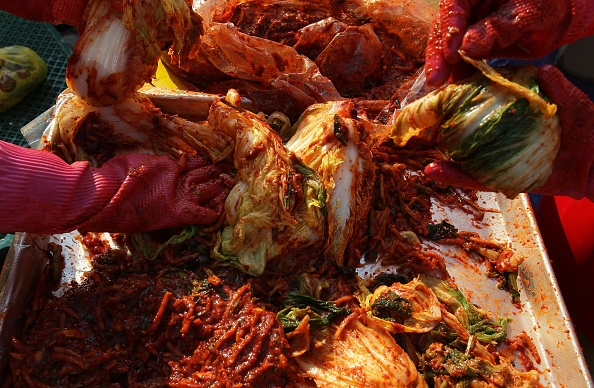6] Carlson writes:
“Harry Robinson’s account of literacy being stolen from Coyote by his white twin conform to all the standard criteria associated with a genre of Salish narratives commonly referred to by outsiders as legend or mythology with one exception – they appear to contain post-contact content” (Carlson 56).
Why is it, according to Carlson or/and Wickwire, that Aboriginal stories that are influenced or informed by post-contact European events and issues are “discarded to the dustbin of scholarly interest”? (56).
According to Keith Thor Carlson and Wendy Wickwire, it is authenticity that condemns Aboriginal stories that are shaped by post-contact European events and issues. However, I want to clarify that I want to point toward a falsified notion of authenticity. Here, I am speaking about the “authenticity” we cast upon a culture, assumptions that guide our perceptions to believe misleadingly how a certain group of people must behave, must live, and in further relevance to the topic at hand, how their narratives must be. For something to be “authentic” it needs to fit our criteria for authenticity, and our subjective perspectives can often fail to consider the possibility that our hardened expectations do not equal fact.

“A detail from Benjamin West’s heroic, neoclassical history painting, The Death of General Wolfe (1771), depicting an idealized Native American.”
An example of such a misstep can be read in Wickwire’s introduction to Living By Stories: A Journey of Landscape and Memory. She discusses the 1990s Boasian research project that aimed to collect and record numerous oral narratives of the Aboriginal people. The project was criticized by a number of anthropologists such as Michael Harkin. The selective mindset of the project was derived from what Harkin described as a desire to preserve “some overarching, static, ideal type of culture, detached from its pragmatic and socially positioned moorings among real people” (qtd. in Wickwire 22). Another apt mirror to this issue comes from the same Wickwire introduction, this time in regards to Claude Lévi-Strauss’ theories of mythic societies. Late anthropologist Terence Turner criticized the man’s analytical process as narrow-minded, saying that “to conclude that the culture as a whole is in the mythic phase, lacking a concept of history, may reflect a lack in the investigative procedure more than a lack in the culture” (qtd. in Wickwire 22). Both of these criticisms illustrate how we may be predisposed to believe in a certain ideal of a culture, and in the case of conjuring up an “ideal” Aboriginal culture, that imagination’s rosy-tinted appearance is easily believed in. To those outside looking in, that imagined Aboriginal culture is romantic, pervaded by pictures of Pocahontas, of singing trees and other spiritual “anomalies” that are charming from a potentially condescending perspective. Thoughts that run along this vein have stemmed from the 18th-century with Rousseau’s concept of the noble savage.
Therefore, the presence of post-contact European ideals, events and issues in Aboriginal stories break this illusion and thus render these narratives to some academic eyes as tainted. Carlson writes of the inability to reconcile both sides of Aboriginal narrative and post-contact European culture by writing that “we have grown so accustomed to associating Aboriginal culture with pre-contact temporal dimensions that we have dismissed Native stories that do not meet our historical purity” (56). Further, he writes that Indigenous cultures (in particular, the Salish) have different criteria for the importance of their stories, and while the authenticity of their narratives is a significant element of these narratives, the difference lies in the way that they are assessed. Salish orators have the authenticity of their stories based on the quality of their conveyance and their presence in the social memory of their people. On the other hand for Westerners “historical accuracy is measured in relation to verifiable evidence” (57), necessitating the existence of footnotes and works cited pages.
“CALM SUNSET — PALETTE KNIFE Oil Painting On Canvas By Leonid Afremov.”
However, this reminds me of the notion of contradictory truths as relayed by J. Edward Chamberlin. His analogy of the two painters, situated on either sides of a harbour painting a ship is an adept illustration for this particular issue of authenticity. One painter colors his or her canvas according to its objective and empirical statistics of the ship, knowing that the ship has twenty-seven portholes and is grey. However, “the other, working in an equally creditable tradition” (221) paints the ship with seven portholes because that’s what the painter can see in the twilight. “He knows it’s wrong, but he also knows it’s right,” (221) Chamberlin writes. If we can remove that academic arrogance of presupposition, perhaps we may be allowed a broader and more comprehensive understanding of Aboriginal cultures. We must remove the superiority complex of the settlers’ science and now, with careful and open ears, re-learn what we thought we used to know.
Works Cited:
Afremov, Leonid. Calm Sunset. Digital image. N.p., n.d. Web. 8 Mar. 2016. <https://afremov.com/CALM-SUNSET-PALETTE-KNIFE-Oil-Painting-On-Canvas-By-Leonid-Afremov-Size-30-X36.html>.
Carlson, Keith Thor. “Orality and Literacy: The ‘Black and White’ of Salish History.” Orality & Literacy: Reflections Across Disciplines. 43-72. Print.
Chamberlin, J. Edward. If This Is Your Land, Where Are Your Stories?: Finding Common Ground. Toronto: Vintage Canada, 2004. Print.
Gardner, Helen. “Explainer: The Myth of the Noble Savage.” The Conversation. The Conversation, 24 Feb. 2016. Web. 28 Feb. 2016. <http://theconversation.com/explainer-the-myth-of-the-noble-savage-55316>.
Greenwood, Davydd J. “Cultural “Authenticity”” Cultural Survival Quarterly6.3 (1982): n. pag. Cultural Survival. 09 Feb. 2010. Web. 28 Feb. 2016. <https://www.culturalsurvival.org/ourpublications/csq/article/cultural-authenticity>.
Robinson, Harry. Living by Stories: A Journey of Landscape and Memory. Ed. Wendy Wickwire. Vancouver: Talonbooks, 2005. Print.
West, Benjamin. The Death of General Wolfe. Digital image. N.p., n.d. Web. 8 Mar. 2016. <https://en.wikipedia.org/wiki/Noble_savage#/media/File:Benjamin_west_Death_wolfe_noble_savage.jpg>.




